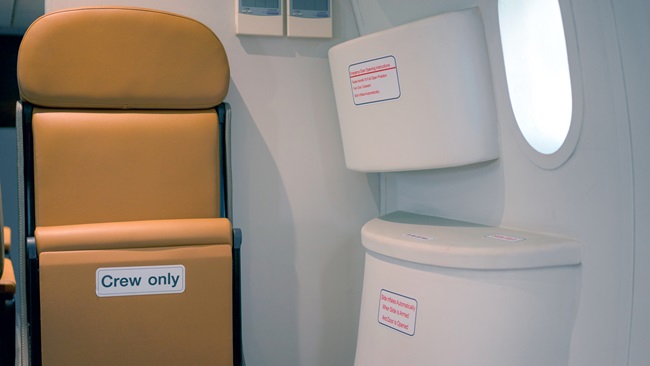How to master communications in a crewed cockpit
One of the challenges a pilot faces in moving up to crewed cockpits is the concept of crew resource management (CRM).

We spend so much time in our early flying days learning how to safely handle an airplane by ourselves that we don’t spend much time thinking about having a “stick buddy” to share the workload in the air. In my first full-time flying job, as a CFI and jack-of-all-trades, we’d very occasionally have to fly as a “crew,” but there was no standard of how to do so. The owner of the company had never really flown crewed airplanes, and my direct supervisor, who had been trained in turbine Part 135 operations, wasn’t the best at explaining who was going to do what. We’d sort of wing it, pun intended.
At my first airline, I was introduced to a much more structured CRM environment. Like a lot of things, CRM can’t all be taught in one classroom, plane, etc. In the simulator, we were taught to use the essential tools of splitting the workload duties, using command/response (CR) checklists, briefing approaches, and the like. Once I started flying the plane, I learned that there are other layers to CRM that I hadn’t thought about. For instance, in the GA world, it’s relatively rare that a pilot needs to use both comm radios. But in corporate and airline flying, it happens all the time. In the pre-ACARS days, the second radio was used for everything from getting a clearance on the ground to getting ATIS to calling ahead to the station/FBO to make special requests and advise of your ETA. In fact, I was shocked to learn how much I’d use the second radio.
One thing I learned straight away is just how much communication goes into communication. When we need to switch to another radio, we advise our partner that we will be ‘off,’ and what we’re doing—getting weather, calling the station for a gate assignment, talking to maintenance. This allows the pilot using that secondary radio to turn off the volume to the first one in order to minimize distractions as well as unnecessary requests for repeated transmissions, which means minimal time away from the primary ATC radio. Once the work on #2 is done, we advise that ‘I’m back on one.’ The other pilot then states any changes, such as new ATC frequencies, altitude or course changes, or updated clearances. If nothing has happened, then we simply say, ‘No changes.’
We do the same thing in more detail when a crew member leaves the cockpit for a lav break. In this case, we do a quick review of the airplanes status before the cockpit door is opened: what vertical and lateral nav modes are in use, what autopilot is on/off, and any upcoming changes such as anticipated climbs or descents. When the pilot returns, we state any changes, and they can go beyond the above to include items such as certain fuel pumps being turned off due to a tank being empty, changes in anti-ice equipment being used, etc. In short, anything that requires a switch or button to be touched or changed or moved is briefed, along with any ATC communication changes. At first, it all feels and sounds very stiff and clunky, but it becomes second nature.
On the ground, this is critical in busy airports with multiple radio changes. Virtually every airline hub has some form of Ramp Control, which is a miniaturized version of ATC, but it deals with getting planes on and off gates and in and out of the ramp. Gates change, or aren’t always ready when they’re supposed to be, and traffic congestion on the ramp can may an L.A. freeway in rush hour look positively giddy. Because the captain is taxiing the plane on the ground, the FO is responsible for working the radios. It is absolutely imperative that an FO keep a captain advised of what radio he or she is using! With one hand on the steering tiller and the other on the throttles, it’s not always possible to switch from one radio to another, and trying to listen to both at once is an invitation for trouble. A solid FO will ALWAYS say which radio he is transmitting on, and if necessary, give the captain a chance to get set up on that radio.
This hit home for me recently when more than one of my FO’s did not do this, and I very nearly taxied my way into trouble, not realizing that our instructions had changed. I now make a point of briefing what I expect with regards to radio etiquette.
Good communication requires good communication. It is far better to provide just a bit too much information than any too little. Ask me how I know this…


